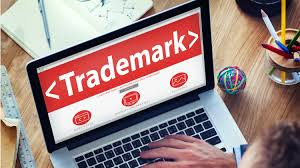Trademarks are referred to
as “Brand Name”. Any word, symbol, device, name, numerals or mixture of
both, which can be represented graphically can be registered as
trademark beneath Indian Trademarks act, 1999. Registration under
trademark grants you right to use the distinctive symbol which helps
to differentiate the products in form of goods or services from others
including the competitors. But, the Brand Name, which is registered with respect
to services is known as the service marks.
A brand Name is that sways the
decision making power of the customers approaching the organization with the
reputation it holds. An idyllic Trademark, through which an organization will
be known, can be the word or phrase that is easy to speak and keep in mind. Irrespective
of the said character, it should not lose its individuality and unique
character. The individuality shall be confirmed by the organization in manner
that it does not disagreement with other registered trademarks or renowned
brands. Apart from brand name registration, a logo can also be applied with the
same application.
An owner or entrepreneur of
business cautious to build a supposed brand in the industry should be conscious
of what are the advantages that a Registered Trademark can offer to your
business to take a wise decision of making an application.
Here are the benefits that Trademark Registration offers to
business
- The established quality of your services and product are known by everyone through the trademark which sets trust and goodwill among the clients in market. As the brand name is legally registered it creates a positive image among customers which assist in creating enduring customers who are faithful and always opt for the same brand.
- A registered company or brand name logo gives gratitude to the quality of the product. Customers attach the product’s quality with the brand name and this picture is created in the market about the quality of a fastidious brand which helps in attracting new clients as they can distinguish the quality of a product by the logo/brand name.
- It makes simple for customers to find your products using ® mark next to the brand name or logo. Trademark makes your product and individuality of products distinct from that of the existing and foreseen competitors acting as competent commercial tool to market the product. The logo will converse your vision, quality or exclusive characteristic to the third parties, unnecessary to say working as self-marketing tool.
- Online Trademark Registration creates an intangible asset i.e. Intellectual Property for an organization. Registered trademark is a right created which can be assigned, sold, franchised or commercially contracted. Also, the Trademark is an insubstantial asset which gives the benefit to the organization. This intangible asset will form part of the financial statements of the owner and hence while transfer of business the value of benevolence can be encashed by the owners.

